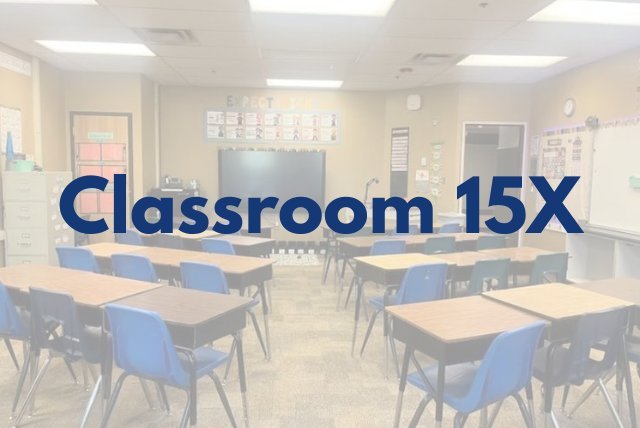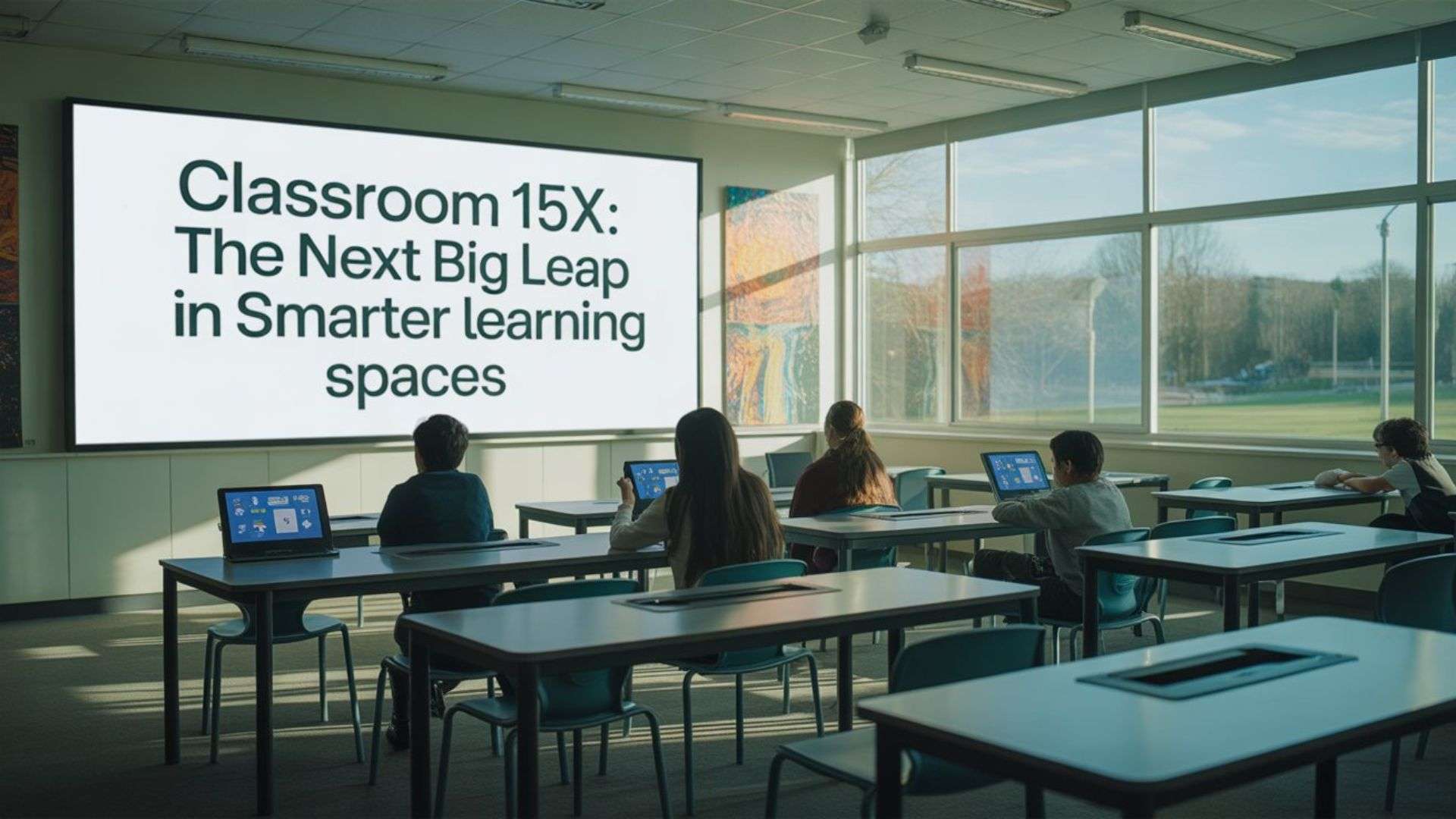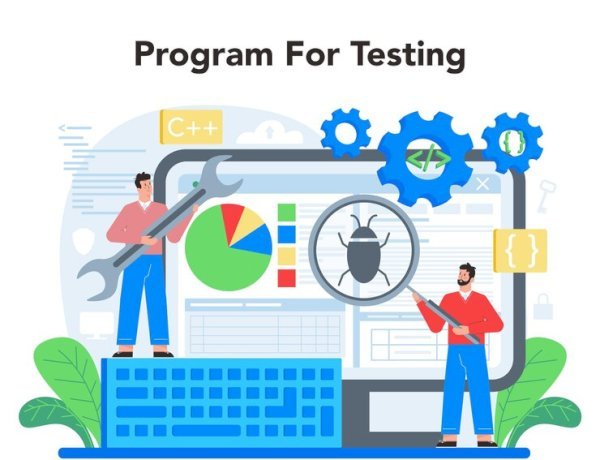Classroom 15X: The Future of Education in 2025 Explained
Discover how Classroom 15X is transforming education in 2025 with AI, flexible spaces, immersive tech, and personalized learning for students.

Education in 2025 looks very different from even a decade ago. Chalkboards, static seating, and one-size-fits-all lectures are fading away, replaced by classrooms that are dynamic, interactive, and powered by technology. At the center of this transformation is a new concept gaining global attention: Classroom 15X.
The idea behind Classroom 15X is simple yet ambitious: create a learning environment that is fifteen times more effective than the traditional classroom. It’s not about small tweaks but about reimagining how education works—through artificial intelligence, flexible spaces, immersive technologies, and a shift in the teacher’s role. Let’s take a closer look at how this vision is reshaping learning today.
Why the “15X” Idea Matters

Image source: spacecoastinsight.com
The term 15X symbolizes exponential improvement. Instead of slowly adjusting old methods, it calls for a bold leap toward classrooms that are adaptable, engaging, and deeply personalized. In practice, this means moving away from rigid routines and toward a model where every student’s needs are recognized and met.
For schools, adopting Classroom 15X is about future-proofing. Students today grow up with smartphones, interactive media, and AI assistants; they expect the same level of personalization and engagement in their learning environment. A 15X classroom matches those expectations and prepares them for the digital world they’ll work in.
Key Features of a Classroom 15X Model

Image source: wentchina.com
Personalized Learning with AI
Artificial intelligence sits at the core of Classroom 15X. Instead of a single lesson plan for thirty students, AI systems track individual progress, highlight strengths and weaknesses, and adjust learning materials accordingly. This creates a pathway where struggling learners receive extra practice while advanced students are challenged with deeper tasks.
Flexible Spaces that Adapt
Traditional rows of desks limit how students learn. Classroom 15X encourages modular furniture and zoned layouts that can change in minutes. A room might shift from small group collaboration to independent quiet study or open presentation space—all within a single day. This adaptability mirrors the workplace of the future, where environments change with the task.
Immersive Experiences
AR and VR bring lessons to life. Instead of reading about ancient civilizations, students can virtually walk through them. Science labs can be simulated in VR, allowing experiments that are otherwise too dangerous or costly. These experiences don’t just entertain—they create deeper retention and understanding.
The Teacher as a Facilitator
In this model, the teacher is no longer the sole source of information. Instead, they guide, mentor, and interpret. Teachers help students analyze data about their own progress, encourage collaboration, and push critical thinking. Freed from repetitive grading and routine tasks, teachers can focus on building curiosity and creativity.
Benefits for Students and Teachers
Image source: gstatic.com
The Classroom 15X approach increases student engagement by making learning more interactive. It ensures greater equity by offering support tailored to each learner’s pace and style. It also prepares students for a future where AI and digital tools are part of every career path.
For teachers, the model reduces time spent on administrative tasks and provides clearer insight into student needs. Rather than teaching to the “middle,” educators can finally give attention to both struggling and excelling students at the same time.
Challenges Along the Way
Image source: gstatic.com
Transforming classrooms doesn’t come without hurdles. Budget constraints are a major concern since immersive technology and modular furniture require investment. Teacher training is another challenge, as many educators feel unprepared to integrate AI and new tools into their practice. And of course, the digital divide remains—access to devices and reliable internet isn’t yet universal.
Despite these barriers, schools can start small. Flexible seating arrangements, free adaptive apps, or pilot projects with AR tools are affordable entry points. The key is gradual adoption rather than attempting a full transformation overnight.
Real-World Examples in 2025
Image source: gstatic.com
Across the world, schools are already experimenting with elements of Classroom 15X. Some have introduced AI dashboards that suggest personalized assignments. Others are piloting virtual labs in science classes to cut costs while expanding learning opportunities. In Europe, modular classroom designs are being tested that let teachers change the entire room setup in less than five minutes.
These early adopters show that Classroom 15X is not a distant dream but a model that is already taking shape.
How to Begin the Transition
Image source: gstatic.com
Schools interested in this model can begin with three simple steps: redesign part of the classroom with flexible furniture, introduce adaptive learning platforms that personalize student work, and offer short, continuous teacher training sessions. From there, expansion can happen gradually—subject by subject, grade by grade—until the full vision of Classroom 15X is realized.
Conclusion
Classroom 15X represents a bold rethinking of how students learn and how teachers teach. It blends artificial intelligence, adaptable spaces, immersive tools, and innovative pedagogy to create an environment where every learner can thrive. While challenges exist, the model is already being tested worldwide, proving its potential to redefine education in 2025 and beyond.
Interestingly, the phrase Classroom15x doesn’t always refer to this education model. In fact, many students use it to describe an online unblocked gaming site. To explore that side of the trend, read our article: Classroom15x.com (2025): Unblocked Games at School – Fun, Risks & Safe Use.
FAQs About Classroom 15X
1. What is Classroom 15X in education?
It’s a modern learning model that blends AI, flexible design, and immersive technology.
2. Why is it called “15X”?
The name represents classrooms designed to be many times more effective than traditional ones.
3. How does Classroom 15X help teachers?
It frees them from routine tasks and allows more time for mentoring and guidance.
4. Can schools adopt Classroom 15X on a budget?
Yes—starting with small, low-cost changes makes it accessible.
5. Is Classroom 15X only about technology?
No—it integrates teaching strategies, physical design, and digital tools together.
6. Is Classroom 15X the same as Classroom15x.com?
No—the first is a learning model, while the second is a student gaming site.
7. How does Classroom 15X prepare students for the future?
It helps students develop digital skills, creativity, and problem-solving abilities—skills that are essential for future workplaces and technology-driven careers.
8. Can Classroom 15X work in both online and physical classrooms?
Yes, the model is flexible. It can be used in traditional classrooms, virtual environments, or a mix of both, depending on the school’s setup.
9. What kind of technology is needed for Classroom 15X?
Schools can use tools like AI-based learning platforms, VR or AR headsets, interactive boards, and cloud systems to support personalized and engaging learning.
10. What are the biggest challenges of adopting Classroom 15X?
The main challenges include funding for new tools, teacher training, and ensuring that all students have access to reliable internet and digital devices.




























